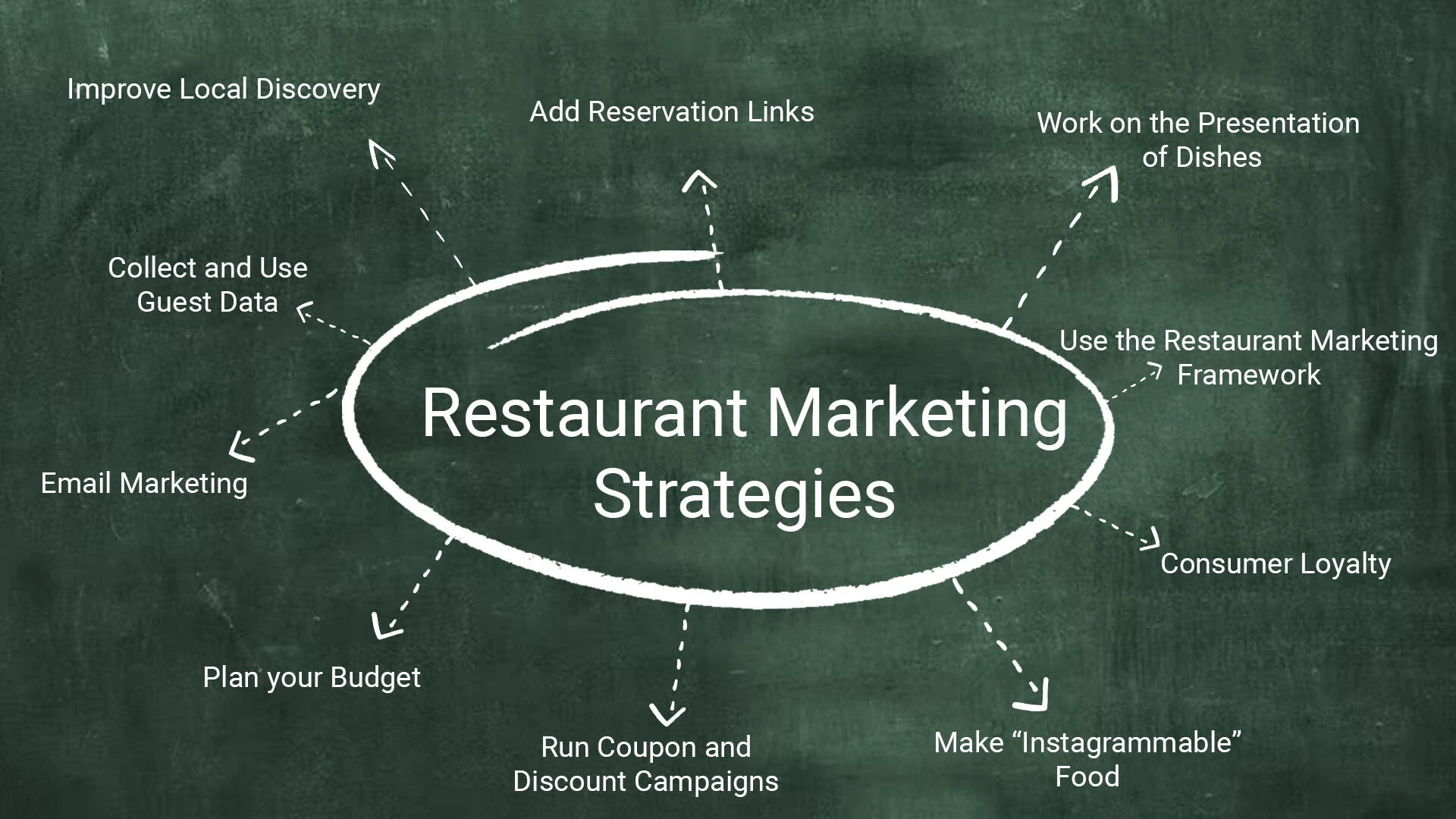
Unlocking the Power of Creativity: 9 Innovative Marketing Strategies for Restaurants
In the dynamic and competitive landscape of the restaurant industry, traditional marketing tactics often fall short in capturing the attention of today’s discerning consumers. To thrive in this environment, restaurants must embrace innovation and creativity in their marketing efforts. In this comprehensive guide, we’ll explore ten unconventional strategies designed to help restaurants stand out, attract new customers, and foster long-term loyalty.
1. Collaborative Partnerships: Expanding Reach Through Alliances
Collaborating with complementary businesses can be a mutually beneficial strategy for restaurants looking to expand their reach. Whether it’s teaming up with local breweries for beer pairing dinners or partnering with nearby theaters for pre-show dining packages, these alliances allow restaurants to tap into new customer bases and drive traffic through cross-promotion. By leveraging the strengths of their partners, restaurants can create innovative offerings that appeal to a broader audience.
Expanding on the strategy: Discuss the benefits of collaborative partnerships for restaurants, including increased brand exposure, access to new customer demographics, and cost-effective marketing opportunities. Provide tips for identifying and forging strategic alliances with compatible businesses in the local community.
2. Window Seat Prestige: Leveraging Social Proof
Perception plays a crucial role in consumer decision-making, and restaurants can use this to their advantage by strategically seating patrons at window tables first. By creating the illusion of high demand, restaurants can attract many a passersby and generate curiosity about their establishment. This simple yet effective strategy leverages social proof to drive foot traffic and elevate the restaurant’s status in the community.
Expanding on the strategy: If you have a patio, encourage them to sit on the patio. This restaurant does that and, as you can tell, it looks like an incredibly popular and busy restaurant that is frequented by a lot of people. In a lot of reviews for restaurants, you’ll notice that people frequently complain about restaurants that aren’t busy enough.
They say they’re too quiet or that it was a ghost town and that is because when people go to a restaurant, they’re looking for that energy, that buzz from other people at that restaurant having a great time that’s almost contagious and in the air.
So, again, when you see people by the windows, it’s almost like a signal that your restaurant will have that sort of energy and it becomes a self-fulfilling prophecy because, as you get more and more customers from the strategy, then you’ll have more customers in the other various parts of the restaurant too, so you won’t even have to necessarily seat windows first because all of your seats will be taken.
3. Weekly Treasure Hunts: Gamifying the Dining Experience
Injecting an element of fun into the dining experience can significantly enhance customer engagement and loyalty. Hosting weekly treasure hunts within the restaurant premises is a creative way to do just that. By hiding QR codes throughout the establishment and offering prizes to participants, restaurants can turn dining into an interactive adventure that keeps customers coming back week after week.
Expanding on the strategy: The way this one works is your restaurant would put up a QR code and an instruction sheet telling people that there are hidden QR codes around the restaurant.
Once discovered, the guest will have to scan the QR code, enter their email address or phone number to join you VIP list (or follow you on social media) and instantly win a special prize like an appetizer, a dessert, or merchandise.
I know a lot of people are thinking that this is too expensive to pay for a subscriber, and I would be inclined to agree, but let’s look at all the details. Let’s say you’re only willing to pay $1 to acquire a new subscriber, but only one in three subscribers actually visit your venue and order food. That means it cost you $3 to get that one person through your doors – not including any special offer/promotion you had to make to entice them to come on that particular day.
If you sell apps for $8 – $10 each then they probably cost you from $2 – $5 per unit. You can see where I’m going here. The cost is about the same – $3 for three subscribers and one comes to your restaurant vs. a $3 appetizer to get a PAID subscriber on your list.
Here’s where things get even more interesting, the customer you’re giving the free appetizer to is already at your place, so you can upsell them on more items. The law of reciprocity states that when you do something nice for someone they are inclined to return the favor – often times by making a purchase or an upgrade at the POS.
And when you build a list through your scavenger hunt, you are building a list of buyers. These are people who are in your restaurant, and will be making (if they haven’t already made) a purchase. This list is way more powerful than a list of subscribers who haven’t had that exchange with you yet – even if the free subscriber list is ten times the size.
Don’t forget, you’re also creating an exciting experience, an experience that most people would enjoy. It’s a really cool idea and it also gets word of mouth going because when people win, they’ll definitely tell their friends about how fun their experience was at your restaurant. When you gamify any task, it becomes a memorable experience, which is intangibly valuable.
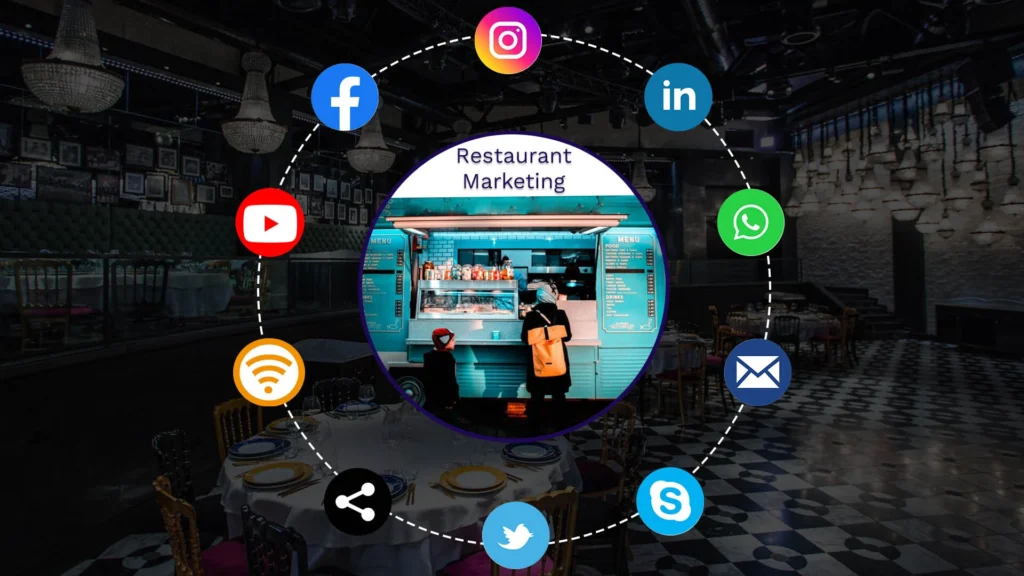
4. Instagram Automation: Engaging Competitors’ Followers
Social media platforms like Instagram and TikTok offer unparalleled opportunities for restaurants to connect with potential customers. One innovative approach involves leveraging Instagram automation tools to engage with the followers of competing restaurants. By strategically interacting with users who follow rival establishments, restaurants can increase brand visibility and attract new patrons to their own venue.
Expanding on the strategy: First, we’re going to talk about stealing your competitors’ customers. The way this works is using Instagram automation. You basically find a competing restaurant’s Instagram account and then set your Instagram account to interact with the followers and the people that are engaging with their posts on autopilot.
So, you’re engaging with the hundreds or thousands of people that follow your competitors every single day, liking their pictures, following them, but I don’t suggest auto-commenting. It always looks weird and spammy. It’s best to comment for real or not at all.
What happens is the people that follow your competitors notice your engagement with them and think to themselves, “Hey! You’re another venue that’s nearby, that offers something great.”
And the best part is, you’re more engaging than the profile they’re currently loyal to. So, maybe they will think about trying you next time that they think about having that type of food or maybe they will think of you next time they have a poor experience with your competitor because you’re building that relationship and nurturing them as potential customers.
There are a lot of great tools online for this, and of course, ours is one of the ones we’d recommend. And, as you can see, you select your profile, you search for the competing restaurant, you set the speed and, then, you select follow.
You can like, comment and do whatever you feel comfortable with is what’s going to work best for you. One quick note on this idea, it is technically against Instagram’s Terms of Service, so use it at your own discretion.
Or you could think about doing this manually, assigning someone on your team that, during the slow times, that could go through to your competitors and follow everyone that follows them, like their pictures and write authentic and fun comments on their pictures to really start building that relationship as an actual human.
To summarize, the way this strategy works is you engage with people more than the competitor does, to get their attention and then you invite them in to try your restaurant. You’ll grab their attention, and they’ll check out your profile, where hopefully you’ll have lots of delicious pictures of your food and your beautiful ambiance and then they’ll consider becoming customers of yours.
The great thing about this is, that you’ll know two very important things about everyone that follows your competitors. One, they’re in your area. Two, they’re interested in exactly what it is you offer in your market.
Let’s say you sell pizza and your competitors also serve pizza. Then, engaging with the followers of your competitors just makes good sense. Otherwise, they wouldn’t be following the competitors.
5. Pizza Roulette: Adding Excitement to the Dining Experience
Dining out is not just about satisfying hunger; it’s also about creating memorable experiences. Pizza roulette is a creative twist on the traditional pizza order, where one slice is randomly topped with a spicy ghost pepper sauce. This element of surprise adds excitement to the dining experience and encourages customers to share their experience with friends and family, generating buzz and repeat business.
Expanding on the strategy: The way it worked is when people ordered pizza, they were allowed to order it pizza roulette style. On a random slice of pizza, the chef would add incredibly spicy ghost pepper sauce. So, for a group of people that really enjoy having fun, food experiences, one of them would bite into a slice of incredibly hot the pizza.
And, of course, that was incredibly engaging to the customer because they didn’t know what slice would have that hot sauce, so they were eating the pizza more intently than they otherwise would have.
Of course they would talk about it more frequently, telling their friends about the crazy experience that they had. This was amazing for driving word of mouth traffic and building loyalty through having an excellent customer experience.
The customers loved it. They have hundreds if not thousands of reviews specifically from this strategy, talking about how interesting and fun and engaging it was. This review says, “upon request, they’ll make your pizza with one slice of ghost pepper sauce that looks and smells the same as any other slice. This is a fun thing to do with friends and will definitely create some nice memories.”
Why is this awesome? Because they’re not just ordering a pizza; this is a whole experience. It becomes more of a fun game, as opposed to just delicious food, which most restaurants just cannot provide.
6. Loyalty Card Swap: Turning Competition into Opportunity
Traditional loyalty programs are a staple in the restaurant industry, but a clever twist can make them even more effective. Restaurants can offer patrons a cheeky trade: exchange a competitor’s loyalty card for a complimentary appetizer or dessert. This playful gesture not only incentivizes customers to try something new but also positions the restaurant as a fun and innovative dining destination.
Expanding on the strategy: Because not only will that give your customers a good laugh, but you’ll actually be destroying your competitor’s loyalty program while acquiring yourself a new customer. The marketing cost to you is effectively zero because your food costs will almost always be under 25% and, on an appetizer, that’s just going to be a few dollars for each new customer.
And that’ll definitely be worth it if you can increase the frequency to that relationship that you have with the customer because of the funny joke. Again, this is remarkable, it’s funny, it’s unique, people will definitely talk about it with their friends.
7. Surprise Philanthropy: Building Community Connections
Community engagement is essential for building a strong brand presence and fostering customer loyalty. Surprise philanthropy initiatives, such as providing complimentary meals to local businesses or hosting charity events, not only give back to the community but also create positive associations with the restaurant. By demonstrating a commitment to social responsibility, restaurants can attract socially-conscious consumers and differentiate themselves from competitors.
Expanding on the strategy: You’re simply going to surprise people. Sending them a free pizza, or some tacos for everyone, that could cost under $50. This would really make a difference in how you’re perceived by all the employees of that organization as well as the people that they help.
Bonus, you’ll be considered for catering because you’ll become almost a part of the company’s culture as this restaurant that everyone at the company loves. And because they work near you, they’re far more likely to become regulars. They’re potentially the best types of regulars because they can literally stop by you a minimum of five days a week eating out.
Free food one time, or even a few times a year is definitely worth it for loyal regulars because regulars are where the vast majority of the profit of your business will come from. It’s people that come in very frequently that help sustain a business.
Here’s an example of a pizzeria that did it right. This pizzeria got a lot of goodwill from a local salon by surprising them with free pizza and not just the salon employees, but also the people that frequent the salon because those people could also potentially become regulars, they’re also very frequently in the area. Clearly, they’ve chosen a salon near them for convenience and they’re constantly at that salon or at least on recurring periods. Say once every six to eight weeks for women or two to four weeks for men. That’s exciting, that’s a lot of opportunity. That’s literally – at least, if they’re men, a dozen different visits they’ll be in the neighborhood for you a year. And, if they’re women, about half a dozen, still really substantial. And they’re definitely from your area as well, so that’s just when they’re visiting the salon. Imagine the benefits that would come if your food really resonates and they really like what they try, they may bring a few friends, or a family, order catering during one of their events, lots of opportunity there that involves giving before asking to take.
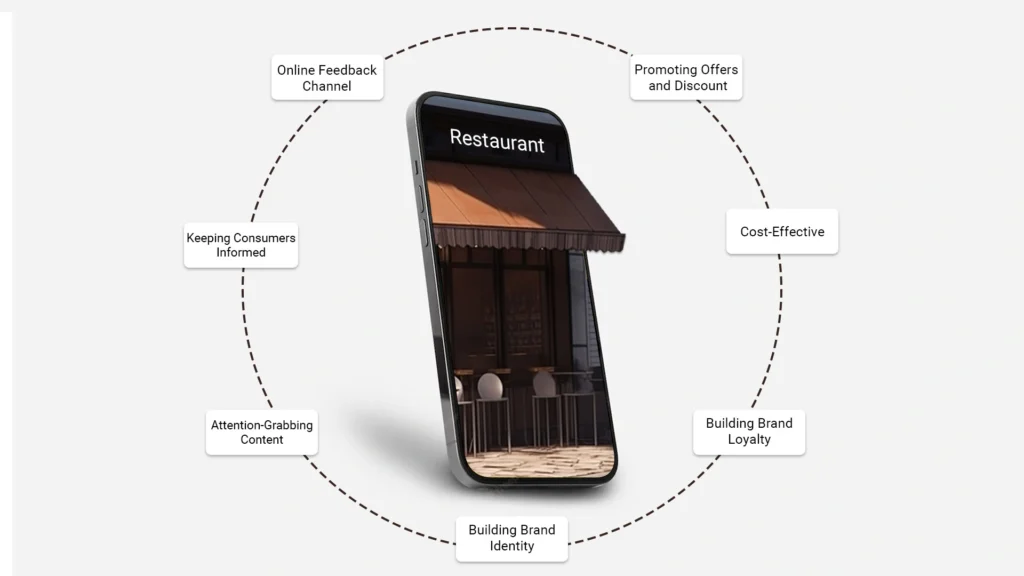
8. Targeted Facebook Ads: Staying Top of Mind
Staying connected with customers is more important than ever. Targeted Facebook ads allow restaurants to reach past patrons with personalized messaging, reminding them of the exceptional dining experience they offer. By strategically timing ads to coincide with peak dining hours and highlighting special promotions or events, restaurants can drive repeat business and maintain a strong presence in customers’ minds.
Expanding on the strategy: Through the Meta network you will find this relatively inexpensive to execute, literally around $10 per 1,000 people you reach that basically involves a feature called custom audiences on Facebook ads. And it sounds really fancy and nerdy, something like I would talk about in very complex terms, but it’s actually really simple.
Basically, you can upload a list of your existing customers to Facebook, either by names, or phone numbers, or emails, or a few other identifiers to say, “hey, Facebook, these people are customers, stay in front of them.” And, then, you serve them ads that remind them of you, of your great experience. Here’s the step-by-step process.
Step one, you go into Facebook Ads Manager and you click on “Audiences” to build your custom audience. Step two, you click “Create Audience” and select “Custom Audience” from the drop-down menu. Step three, you click on “Customer List”. From here, Facebook will match up the emails on your list with those Facebook user profiles, or the phone numbers on your list, or sometimes even the names.
Then you can send them targeted Facebook ads. Facebook will now sync your contact list to these customers Facebook profiles letting you send them targeted ads. You can get fancy with the strategy by only targeting people during lunch time, or dinner time, or a different time that you’re trying to fill up. So, when they’re getting hungry for that meal time, you become top of mind and they are your customers, so they already value your experience, so you can just talk about your features, your friendly service, your delicious food, your amazing ambiance, your easy parking, stuff like that.
Call them to action. Say click to get directions, to come back to us, or click order online now, we’re happy to deliver to you. Whatever it is that works in your situation, I’d recommend testing a bunch of different ad copy and seeing which you can get the lowest cost per acquisition, per new customer basically down with.
9. Experiential Dining Events: Creating Memorable Experiences
Hosting experiential dining events is an excellent way for restaurants to differentiate themselves and attract new customers. Whether it’s a themed dinner, cooking class, or wine tasting event, these unique experiences create lasting memories for guests and encourage them to return for future visits. By offering something beyond the ordinary dining experience, restaurants can stand out in a crowded marketplace and build a loyal customer base.
Expanding on the strategy: Provide examples of successful experiential dining events hosted by restaurants and their impact on customer engagement and brand loyalty. Discuss best practices for planning and executing memorable dining experiences that resonate with target audiences.
Embracing innovation and creativity is essential for restaurants looking to succeed in today’s competitive market. By implementing these nine innovative marketing strategies, restaurants can differentiate themselves, attract new customers, and cultivate a loyal fan base that will keep coming back for more.

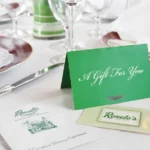
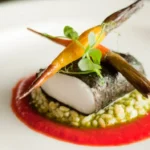

Leave your comment
You must be logged in to post a comment.